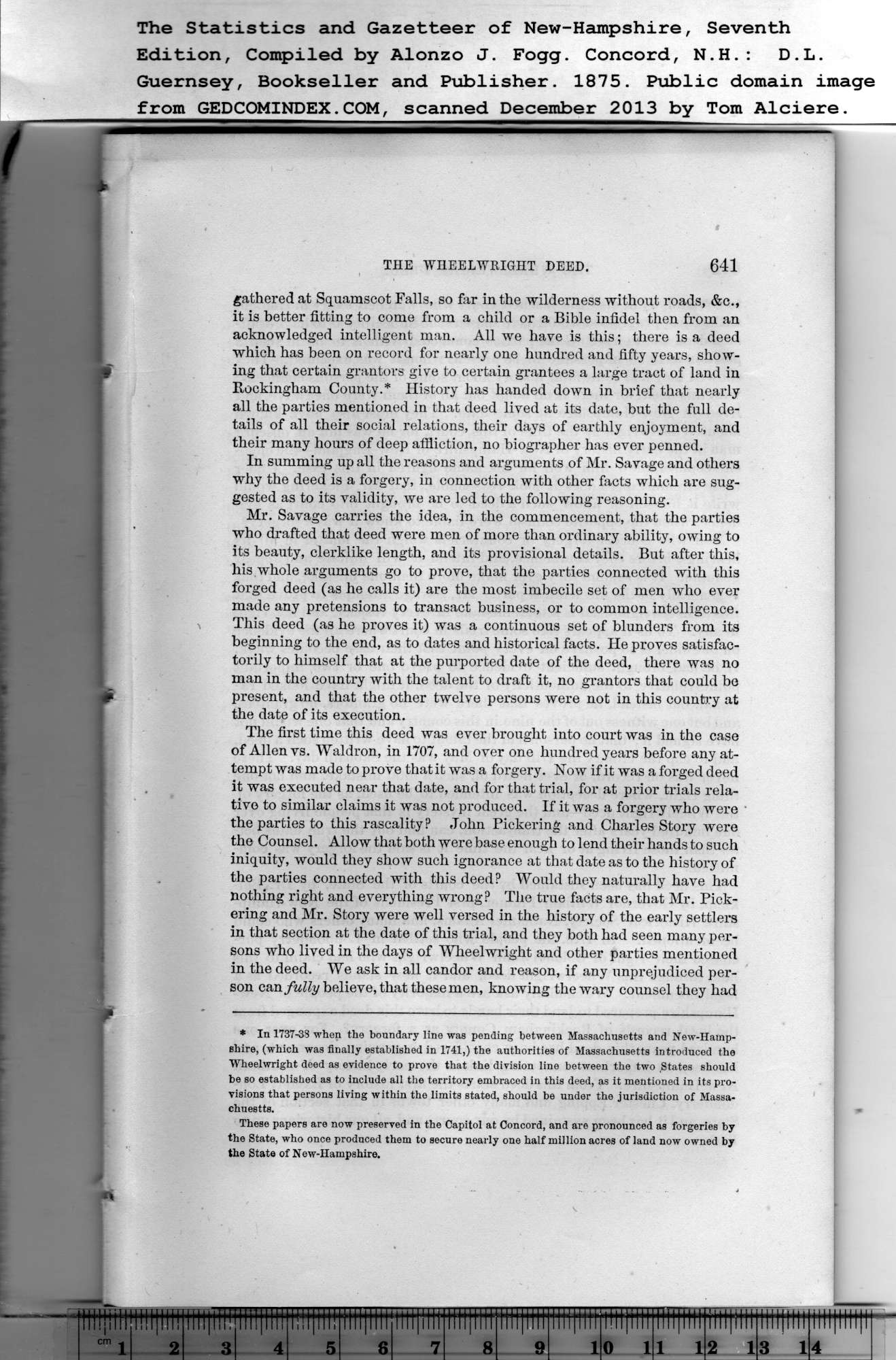|
I
THE WHEELWRIGHT DEED. 641
gathered at Squamseot Falls, so far in the wilderness without roads, &c.,
it is better fitting to come from a child or a Bible infidel then from an
acknowledged intelligent man. All we have is this; there is a deed
which has been on record for nearly one hundred and fifty years, show-
ing that certain grantors give to certain grantees a large tract of land in
Rockingham County.1 History has handed down in brief that nearly
all the parties mentioned in that deed lived at its date, but the full de-
tails of all their social relations, their days of earthly enjoyment, and
their many hours of deep affliction, no biographer has ever penned.
In summing up all the reasons and arguments of Mr. Savage and others
why the deed is a forgery, in connection with other facts which are sug-
gested as to its validity, we are led to the following reasoning.
Mr. Savage carries the idea, in the commencement, that the parties
who drafted that deed were men of more than ordinary ability, owing to
its beauty, clerklike length, and its provisional details. But after this,
his whole arguments go to prove, that the parties connected with this
forged deed (as he calls it) are the most imbecile set of men who ever
made any pretensions to transact business, or to common intelligence.
i This deed (as he proves it) was a continuous set of blunders from its
beginning to the end, as to dates and historical facts. He proves satisfac-
torily to himself that at the purported date of the deed, there was no
man in the country with the talent to draft it, no grantors that could be
present, and that the other twelve persons were not in this country at
the date of its execution.
The first time this deed was ever brought into court was in the case
of Allen vs. Waldron, in 1707, and over one hundred years before any at-
tempt was made to prove that it was a forgery. Now if it was a forged deed
it was executed near that date, and for that trial, for at prior trials rela-
tive to similar claims it was not produced. If it was a forgery who were
the parties to this rascality? John Pickering and Charles Story were
the Counsel. Allow that both were base enough to lend their hands to such
iniquity, would they show such ignorance at that date as to the history of
the parties connected with this deed? Would they naturally have had
nothing right and everything wrong? The true facts are, that Mr. Pick-
ering and Mr. Story were well versed in the history of the early settlers
in that section at the date of this trial, and they both had seen many per-
sons who lived in the days of Wheelwright and other parties mentioned
in the deed. We ask in all candor and reason, if any unprejudiced per-
son c&n fully believe, that these men, knowing the wary counsel they had
1
In 1737-38 when the boundary line was pending between Massachusetts and New-Hamp-
shire, (which was finally established in 1741,) the authorities of Massachusetts introduced the
Wheelwright deed as evidence to prove that the division line between the two States should
be so established as to include all the territory embraced in this deed, as it mentioned in its pro-
visions that persons living within the limits stated, should be under the jurisdiction of Massa-
chusetts.
These papers are now preserved in the Capitol at Concord, and are pronounced as forgeries by
the State, who once produced them to secure nearly one half million acres of land now owned by
the State of New-Hampshire.
PREVIOUS PAGE ... NEXT PAGE
This page was written in HTML using a program written in Python 3.2
|
